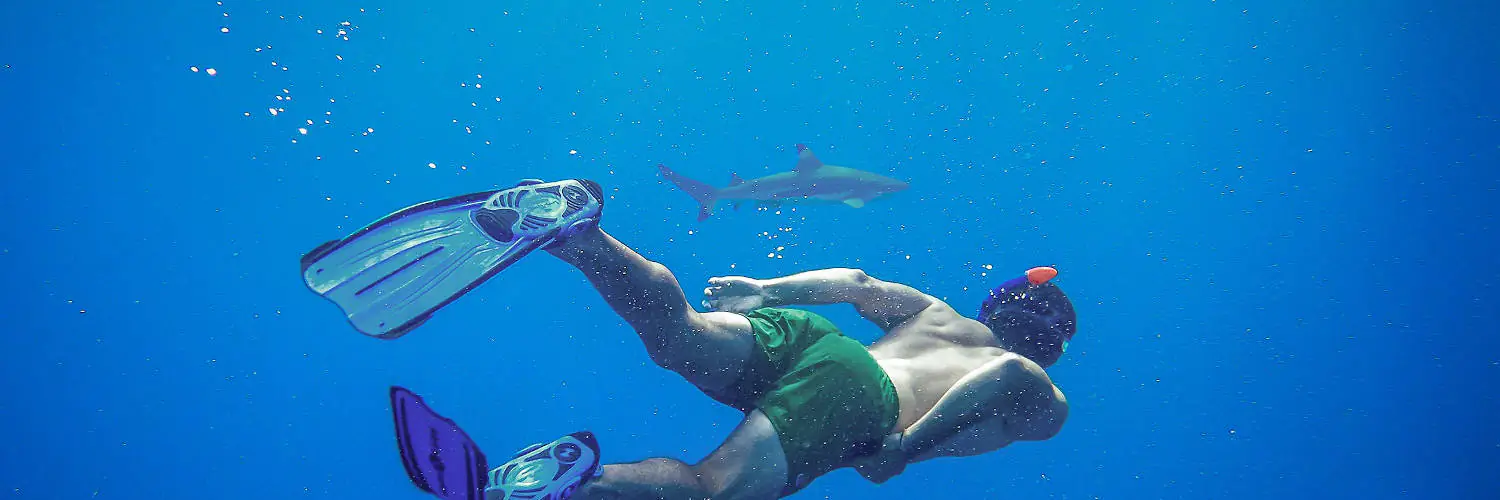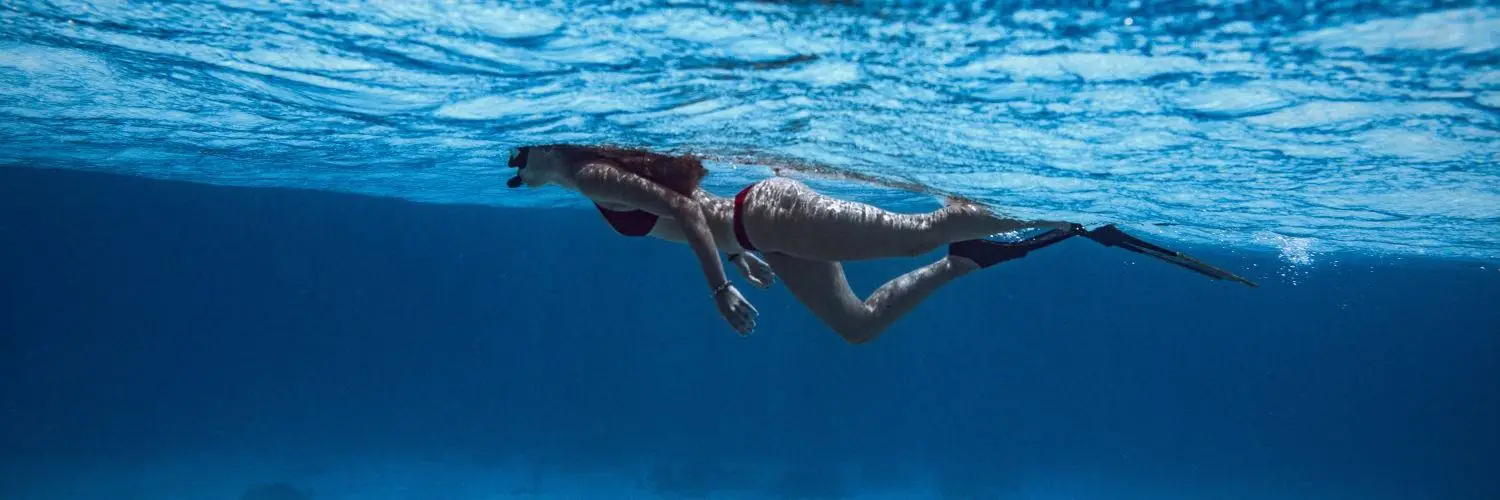A torn anterior cruciate ligament (ACL) is a significant injury that often requires surgery and a rigorous rehabilitation process. As people go through recovery, they may wonder when they can return to their favorite water activities, including snorkeling. ACL surgery typically entails a structured period of physical therapy to restore strength and stability to the knee, which is critical for any sporting activity.
Snorkeling after ACL surgery involves some considerations to ensure a safe and enjoyable experience. The buoyancy of water can be therapeutic, providing a gentle resistance that helps in the rehabilitation of the knee. However, it’s essential to get a green light from a healthcare provider before engaging in snorkeling, as the movement of fins and the current of the water can place demands on the healing knee.
Reintroduction to water activities like snorkeling should be gradual, and individuals should pay close attention to their knee’s response both during and after the activity. It’s advised to start with shallow, calm waters and shorter sessions, progressing cautiously as comfort and strength in the knee increase. Monitoring swelling and pain is a good indicator of whether the knee is coping well with the activity.
Table of Contents
Understanding ACL and Surgery
In this part, we will study the knee’s structure, dig into ACL surgery details, and talk about methods to fix a torn ACL.
Anatomy of the Knee
The knee is a complicated joint where bones, tendons, and ligaments meet. It has the tibia (shin bone), femur (upper leg bone), and patella (kneecap). The main thing for knee strength is the ACL, or anterior cruciate ligament. It stops the tibia from moving ahead of the femur and keeps it stable.
What Is ACL Surgery?
ACL surgery is a procedure aimed at restoring function to the knee after an ACL injury. A torn ACL is one of the most common knee injuries, particularly among athletes. The surgery typically involves reconstructing the torn ligament using a tendon graft taken from the patient’s own body (autograft) or from a cadaver (allograft). Knee fix surgery is done if other ways do not work. This surgery helps make knee strong.
Surgical Techniques
Doctors have found better ways to fix the ACL that need less cutting and help people get better faster. This is about how surgery for the ACL has changed to make recovery quicker and make the results better. The surgery is carried out using small incisions around the knee joint. Through these incisions, the surgeon will insert a camera and thin surgical instruments to remove the torn ligament, prepare the area for the graft, and position the new graft. This type of surgery is performed arthroscopically and uses sutures or other fixation devices to secure the graft, which will eventually integrate with the bone. Minimally invasive techniques result in less tissue disruption and may lead to quicker healing.
Post-Surgery Recovery Process
The recovery from ACL surgery is a structured process designed to ensure optimal healing and the return to pre-injury knee function. Critical in the initial phase is managing swelling and pain while protecting the knee as it heals.
Immediate Post-Operative Recovery
Immediately following ACL reconstruction, the patient’s knee is typically wrapped in bandages, and a brace is worn to immobilize the knee. Swelling and pain are common post-surgery and can be addressed through ice therapy and pain medication as prescribed. The patient is usually advised to keep the leg elevated and rest to facilitate recovery. The use of a Continuous Passive Motion (CPM) machine may be advised to support gentle motion of the knee joint, which helps in reducing swelling and maintaining mobility.
Proper wound care is also crucial. The patient will receive instructions on how to care for the incision sites to prevent infection and ensure proper healing of the skin. During this period, sleep is essential but might require adjustments to find a comfortable position that does not place pressure on the knee.
Recovery Timeline and Milestones
The timeline for recovery after ACL surgery varies, with patients often returning to non-impact activities in several weeks, and full recovery can take up to 6-12 months. Recovery milestones may include:
- Week 1-2: Pain and swelling management, begin rehabilitation program for range of motion.
- Weeks 3-4: Progressive weight-bearing exercises as tolerated; may start stationary cycling.
- Weeks 5-10: Gradual increase in physical therapy exercises aimed at strengthening.
- Months 3-6: Continuation of exercise regimen; introduce low-impact sports.
- Months 6-12: Slowly go back to sports and more intenstive activities.
During getting well, it’s important that the person follows the plan for getting better and listens to the doctors. They need to do this to make the knee strong and working well again. It’s essential for patients to follow their post-operative instructions closely and attend all follow-up appointments to monitor the healing process and make adjustments to their recovery plan as necessary.
Rehabilitation and Physical Therapy
After ACL surgery, a deliberate approach to rehabilitation and physical therapy is essential to reclaim strength, balance, and range of motion. A special plan usually follows a specific procedure, considering how each person is doing and what goals they need to reach during recovery.
Importance of Physical Therapy
Physical therapy is critical after ACL reconstruction, as it guides the healing process and helps to ensure a successful recovery. It primarily focuses on restoring muscle strength, particularly in the quadriceps, and improving rom (range of motion). Therapists make plans to help people get better and avoid problems. They work on balance and strong joints so people can do regular stuff.
Exercises and Range of Motion
The progression through physical therapy sessions involves a series of exercises that focus on regaining range of motion (ROM) and building muscle strength. First, easy stretching helps make the body more flexible. After that, workouts make the front leg muscles stronger. As time goes on, people do activities to make their balance better and to figure out where their body parts are. The therapy changes to have more active things as the person gets better.
Return to Activity and Sports
The recovery journey following ACL surgery has a definitive pathway with milestones that athletes must achieve before returning to sport. This section outlines the criteria for resuming sports and the necessary sport-specific rehabilitation.
Criteria for Returning to Sports
Before an athlete can return to sport, they must meet several criteria that ensure the knee is ready for athletic stress. Knee strength is paramount, and objective measurements are often used, such as achieving at least 90% strength of the uninjured leg. Being fast and able to move quickly, jump, run, and do exercises for a particular sport without fear are indications of being prepared. The criteria include:
- Leg Press Performance: Attainment of symmetrical leg strength, often at least 90% of the uninjured leg.
- Running: Full running ability without discomfort or instability.
- Jumping: Controlled and pain-free jumping and landing, which is crucial for sports like basketball and soccer.
- Motivation and Mental Readiness: The athlete’s psychological readiness to return to play is as important as their physical recovery.
Sport-Specific Rehabilitation
After an ACL injury, rehabilitation must be tailored to the specific demands of the athlete’s sport. For example, a soccer player will focus on drills that mimic soccer movements including cutting, pivoting, and controlled ball strikes. Whereas, a football player’s rehab might be centered on sprints, stops, and tactical play simulations. Key aspects include:
-
Soccer:
- Agility Drills: Emphasis on cutting and changing direction.
- Knee Strength: Focus on exercises like squats and lunges for soccer-specific knee stability.
-
Basketball:
- Jump Training: Exercises that improve vertical leap and safe landing techniques.
- Plyometrics: To improve how the knees move using playing basketball movements.
-
Football:
- Power Training: Integration of exercises that increase explosive power necessary for football.
- Conditioning: Sport-specific conditioning to ensure readiness for the demands of a full football game.
Effective rehabilitation and a deliberate return-to-sport plan are essential for athletes across all roles, whether they engage in soccer, football, basketball, or other athletic endeavors. Each sport has unique demands that must be rigorously addressed to minimize the risk of re-injury and ensure long-term knee health.
Complications and Care
After ACL surgery, special attention to potential complications and long-term care is crucial for a successful recovery, especially when considering activities such as snorkeling. Careful management of the knee joint and adherence to medical advice can ensure better outcomes.
Potential Complications
Infection: If you see any infection signs, like fever or more knee hurt, talk to a doctor right away.
- Symptoms to watch for:
- Redness
- Warmth around the incision
- Discharge from the incision site
Swelling and Stability: Postoperative knee swelling is common, but persistent or excessive swelling may impact the stability of the ACL graft. Use of a knee brace and following weight-bearing guidelines can help manage swelling.
- Measures to enhance stability:
- Controlled leg exercises to improve leg control
- Gradual increase in weight-bearing activities as advised
Blood Clots: The risk of blood clots is present after any major surgery.
- Preventative actions include:
- Leg elevation
- Compression garments
- Early mobility exercises
Long-Term Care and Considerations
Medication and Pain: Over-the-counter NSAIDs or prescribed pain medication can manage postoperative discomfort. For some patients, a local anesthetic may be administered around the incision site for pain relief.
- Medication should be used as directed:
- Monitor for adverse reactions
- Adjust as needed under doctor’s guidance
Rehabilitation: A structured rehabilitation program is vital for a strong recovery. Depending on the type of graft used, such as patellar tendon or hamstring tendon, the progression may vary.
- Essential rehab components include:
- Strengthening exercises
- Coordination training
- Gait re-education
Follow-Up: Checking with the doctor helps track the ACL graft and the inner knee ligament. This makes sure the graft heals well and the knee ligament stays strong.
- Bracing may be recommended for additional knee support during certain activities, including snorkeling.
- Always consult a healthcare professional before resuming water-based activities to ensure sufficient healing and readiness.
Lifestyle and Support
After fixing ACL, how you live and help from others are crucial. Good food helps body fix and mind support keeps you working hard.
Nutrition and Recovery
Adequate nutrition is essential for knee strength and overall health post-ACL surgery. Good food helps body grow and heal. Foods with much protein, vitamins, and minerals help body fix itself and lower swelling. To enhance recovery, individuals should:
- Consume lean proteins to aid in muscle repair.
- eat omega-3 fatty acids to combat swelling.
- Eat a variety of fruits and vegetables for essential vitamins and minerals.
- Drink water to help joints move and to move nutrients.
Psychological Support and Motivation
Help with the mind is very important in getting better from ACL pain. Doctors like to tell people to get help with the mind for getting better from ACL pain:
- Regular sleep patterns, as they are vital for physical and mental recovery.
- Joining groups or talking to someone for a positive mood.
- Create doable targets to boost drive and check growth.
Motivation plays a key part in adhering to a prescribed rehabilitation plan. Others can help you stay strong during tough times in getting better. Friends, family, and doctors can support and cheer you on. Their words can make you feel better.








